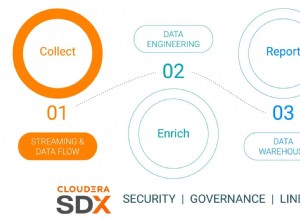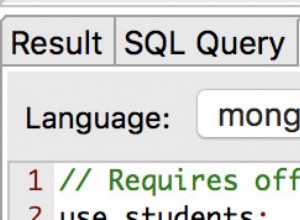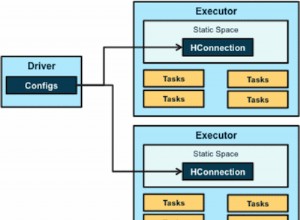W większości przypadków SADD lub ZADD z poleceniami potokowania będzie lepiej. Użyj transakcji MULTI/EXEC, jeśli istnieje ryzyko, że inny klient może uzyskać klucz pomiędzy nimi, uzyskując w ten sposób niekompletny obiekt.
Uściślenie listy w polu mieszającym może być w kilku przypadkach uzasadnione.
Jeśli chodzi o „Szybką eksmisję kluczy”, pamiętaj, aby użyć UNLINK zamiast DEL .
Jeśli zdecydujesz się na łańcuchowanie, oto jak atomowo obsługiwać wstawianie i usuwanie do tablicy zakodowanej w formacie JSON w polu skrótu przy użyciu biblioteki Lua i Lua CJSON:
Wstaw :
local items = cjson.decode(redis.call('HGET', KEYS[1], 'items'))
table.insert(items, ARGV[1])
return redis.call('HSET', KEYS[1], 'items', cjson.encode(items))
Usuń według wartości :
local items = cjson.decode(redis.call('HGET', KEYS[1], 'items'))
local pos = -1;
for i, v in ipairs(items) do
if ARGV[1] == v then
pos = i
break
end
end
if pos == -1 then
return -1
else
table.remove(items, pos)
return redis.call('HSET', KEYS[1], 'items', cjson.encode(items))
end
Przykład użycia :
> HGETALL meta_key
1) "user"
2) "12345"
3) "tag"
4) "D12321341234123"
5) "items"
6) "{}"
> EVAL "local items = cjson.decode(redis.call('HGET', KEYS[1], 'items')) \n table.insert(items, ARGV[1]) \n return redis.call('HSET', KEYS[1], 'items', cjson.encode(items))" 1 meta_key value1
(integer) 0
> HGETALL meta_key
1) "user"
2) "12345"
3) "tag"
4) "D12321341234123"
5) "items"
6) "[\"value1\"]"
> EVAL "local items = cjson.decode(redis.call('HGET', KEYS[1], 'items')) \n table.insert(items, ARGV[1]) \n return redis.call('HSET', KEYS[1], 'items', cjson.encode(items))" 1 meta_key value2
(integer) 0
> HGETALL meta_key
1) "user"
2) "12345"
3) "tag"
4) "D12321341234123"
5) "items"
6) "[\"value1\",\"value2\"]"
> EVAL "local items = cjson.decode(redis.call('HGET', KEYS[1], 'items')) \n local pos = -1; \n for i, v in ipairs(items) do \n if ARGV[1] == v then \n pos = i \n break \n end \n end \n if pos == -1 then \n return -1 \n else \n table.remove(items, pos) \n return redis.call('HSET', KEYS[1], 'items', cjson.encode(items)) \n end" 1 meta_key value1
(integer) 0
> HGETALL meta_key
1) "user"
2) "12345"
3) "tag"
4) "D12321341234123"
5) "items"
6) "[\"value2\"]"
> EVAL "local items = cjson.decode(redis.call('HGET', KEYS[1], 'items')) \n local pos = -1; \n for i, v in ipairs(items) do \n if ARGV[1] == v then \n pos = i \n break \n end \n end \n if pos == -1 then \n return -1 \n else \n table.remove(items, pos) \n return redis.call('HSET', KEYS[1], 'items', cjson.encode(items)) \n end" 1 meta_key value3
(integer) -1
> HGETALL meta_key
1) "user"
2) "12345"
3) "tag"
4) "D12321341234123"
5) "items"
6) "[\"value2\"]"




